Baseus Blade 2 review: Ultra sleek 65W power bank with one big caveat
Like other Chinese accessory makers, Baseus has launched into many new segments in recent months, and its Eli Sport 1 headphones stand out in particular for their open-ear profile. But charging technology is where Baseus is at its best, and the brand’s Blade 100W power bank continues to be one of the best on the […]
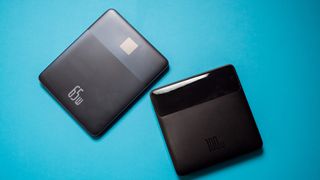
Like other Chinese accessory makers, Baseus has launched into many new segments in recent months, and its Eli Sport 1 headphones stand out in particular for their open-ear profile. But charging technology is where Baseus is at its best, and the brand’s Blade 100W power bank continues to be one of the best on the market.
With the Blade 2, Baseus is taking a slightly different route. The focus is now on an even sleeker design and, at just 10mm thick, it’s as svelte as a phone. The Blade 2 has a smaller 12,000mAh battery – instead of the Blade’s 20,000mAh – and as such the power bank only weighs 328g. He sells for $89 on Amazonbut Baseus is currently offering a tempting deal that discounts the Blade 2 by 30%, bringing the effective cost down to just $63.
There are other differences; the Blade 2 only goes up to 65W, so it’s not as versatile for charging laptops. It also comes in some interesting color choices, and while this isn’t a factor to consider when choosing a power bank, the Blade 2 looks much better than the standard black option of the Blade.

If anything, the Blade 2’s design is much more refined and conveys a sense of style that wasn’t evident on the original Blade. The power bank retains Baseus’ custom design, so you get a rectangular chassis with rounded edges that is thinner and wider than most power banks. At first glance, it doesn’t look like a power bank, and its ultra-thin design makes it easily portable.
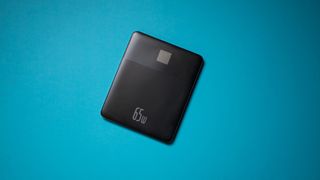
I am using the blue color variant of the Blade 2, and the power bank also comes in silver and orange colors. Baseus packs a 100W USB-C to USB-C cable in the box as well as a carrying pouch, and the lighter design combined with new colors gives the Blade 2 a much better presence. While I really like the design, the shiny plastic coating means the power bank is a stain magnet.
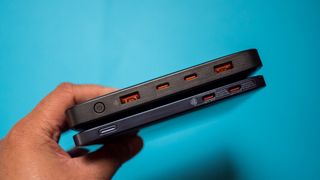
What I’m not as excited about is the port selection; Due to its slimmer design, Baseus had to ditch the USB-A port, so you only have two USB-C ports on the Blade 2. This again limits the number of devices that can be used with the bank power; I regularly plug in accessories like smartwatches, and they always rely on a USB-A connector.
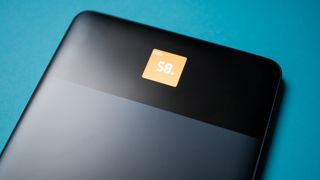
Like its predecessor, the Blade 2 has a built-in screen that shows battery life and charging information. It’s brighter and easier to read, and the only issue I have is that the battery level is displayed in the center, with the real-time charging details hidden in the corner – it should have been the other way around .
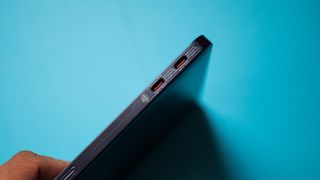
You get the same USB PD 3.0 charging technology, but it only goes up to 65W. This isn’t an issue with the Blade 2 as it’s obvious that the power bank is designed for use with phones, and the 12,000 mAh battery isn’t big enough to charge laptops anyway. You can still charge a MacBook and have enough charge for a phone, but if you need to do it consistently, you’re much better off with the original Blade.
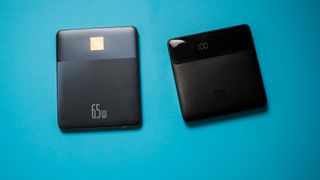
Where the Blade 2 wins is portability; its slimmer design and lighter weight make it the ideal choice for everyday use. The two USB-C ports are perfect for charging two phones at once, and you get the 65W power budget split into 45W and 20W across the two ports. On that note, here’s a look at the charging profiles you get with the power bank:
- USB-C1/C2 output (65W maximum): 5V/3A (15W), 9V/3A (27W), 12V/3A (36W), 15V/3A (45W), 20V/3.25A (65W) ).
- USB-C1/C2 input (60 W maximum): 5V/3A (15W), 9V/3A (27W), 12V/3A (36W), 15V/3A (45W), 20V/3A (60W).
- USB-C1 + C2 (65W maximum): 45W + 20W
I’ve used the power bank with several devices, including the iPhone 15 Pro Max, Pixel 8 Pro, Xiaomi 14, and Zenfone 11 Ultra, and haven’t noticed any issues. It provided a constant charge and was able to fully charge two devices.
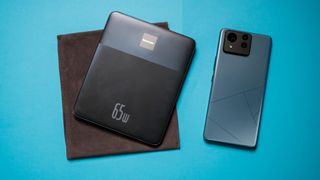
Obviously, the biggest limitation is the 12,000 mAh battery; while it’s still a decent option for charging phones, it’s not up to par if you want to use it with laptops. Best Power Banks Feature 20,000mAh Battery and 65W Charging — Baseus makes one that only costs $45 – and you get a USB-A port. Yes, these power banks have a “traditional” design and aren’t as sleek as the Blade 2, but they have much better utility and value for money.
Ultimately, the Blade 2 caters to a niche; If you want a lightweight power bank and intend to use it only with your phone, this is a pretty decent choice. Otherwise, you should just get the standard blade.
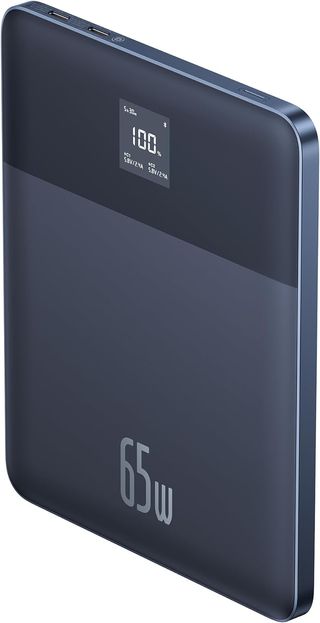
Baseus Blade 2 65W 12000mAh Power Bank
The Blade 2 is pretty decent if you need a 65W power bank with a slim design. The two USB-C ports do a great job providing reliable charging, and the 12,000 mAh battery can easily charge two phones.














